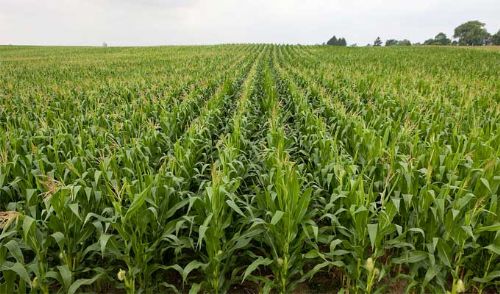
Feeding in high energy maize will deliver the greatest power output from anaerobic digestion systems. And for the most efficient methane gas production you need to be harnessing the highest possible levels of energy per hectare from maize crops, according to Nigel Padbury of Syngenta.
Coinciding with the International Biopower Generation Congress in Rotterdam this week (13/14 March 2012), Mr Padbury urged that concentrated power, in the form of high levels of maize metabolisable energy (ME), is the route to optimising performance.
"Maximising the power output from any given anaerobic digestion plant capacity relies on the amount of readily available energy going into system," said Mr Padbury. "Essentially, more megajoules in, equals more power out."
Growing the right maize variety can make a significant difference in the performance of any system. Varieties grown for biogas feedstock that contain a high proportion of indigestible fibre will slow down the system and reduce its generating capability, he warned. Whereas growing a highly digestible, high ME yield maize variety can produce more power, more efficiently.

Furthermore, growing a high ME yielding maize variety reduces the tonnage required for any given energy output, and thereby cuts the volume and costs of transporting and ensiling the crop, compared to high-biomass varieties – making it a greener energy source, he added.
"Growers must look at a maize variety’s yield of ME per hectare to get the maximum return from the crop," advised Mr Padbury. "Independent trials have confirmed the variety NK Bull consistently delivers the highest energy yield per hectare at harvest, and it retains the high energy levels over an extended period in the autumn - giving growers greater flexibility in harvest timing, whilst still achieving desired high quality feedstock for biogas production."
He highlighted that the ME of NK Bull is even more important where maize is combined with lower value waste stream feedstock. Utilising the highest possible ME yield per hectare is crucial to getting the most efficient power production from the AD investment and the land area, to assure a sustainable biofuel source.
Some maize varieties on 2012 UK NIAB Descriptive List produce ME yields below 200,000 MJ/ha, or around 15 per cent less energy per hectare than NK Bull, warned Mr Padbury. The list shows NK Bull produces the highest ME yield of over 228,000 MJ/ha – with an ME content of 11.66 MJ/Kg DM and exceptional levels of over 60% cell wall digestibility. The Syngenta maize breeding programme, focussed on combining high energy and high digestibility, has produced other varieties with very high ME yields per hectare, such as Paddy and NK Jasmic, he reported.
The performance of high energy varieties is echoed by Jos Groten, Head of the Dutch PPO Applied Plant Research, which undertakes the official maize trials in Holland - where on-farm biogas from maize is now producing a significant part of the country’s energy requirement. "If metabolisable energy yields are low or dry matter percentage is poor, methane yields are also likely to be low.
"Following three years of specific biogas variety trials we can give clear advice to biogas farmers: for the most profitable biogas production, grow varieties with high energy yields."
